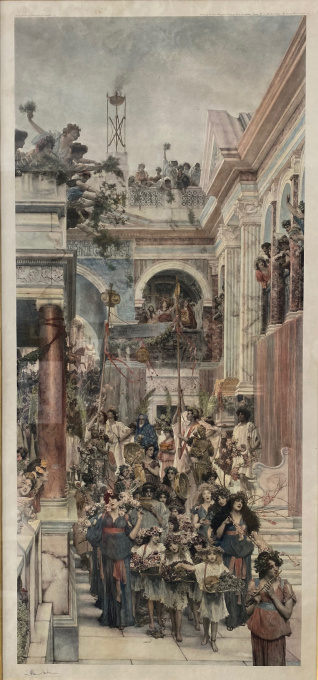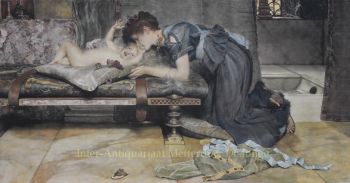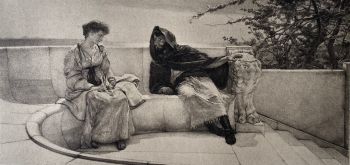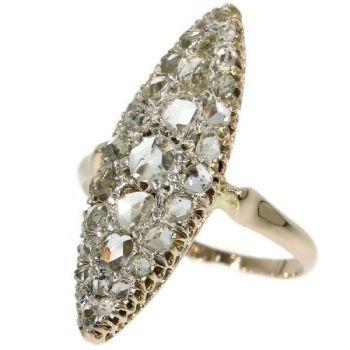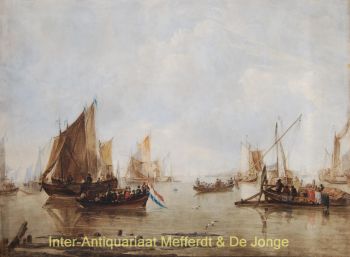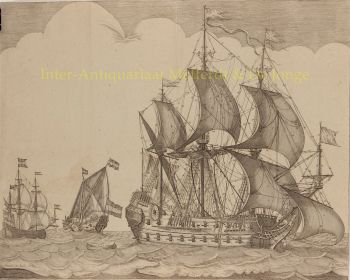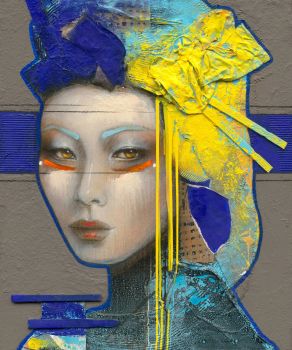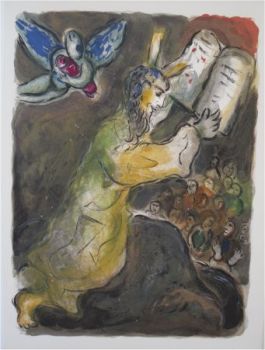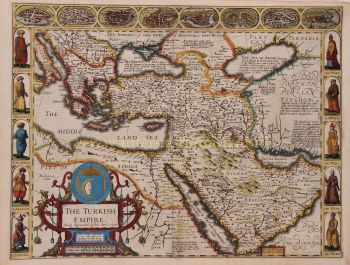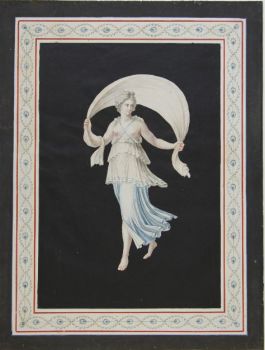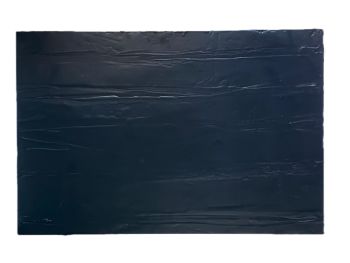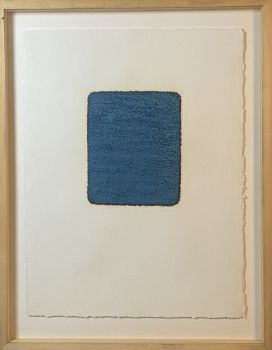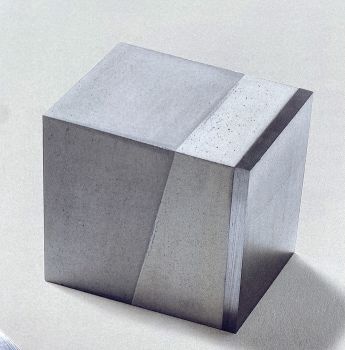"Spring" (original photogravure/ print, signed and hand coloured) 1894
Lawrence Alma-Tadema
HeliographieFine Art PapierdruckFoto-LithoFotodruck
89 ⨯ 39 cm
Preis auf Anfrage
Gallerease Selected
- Über Kunstwerk
"Spring", engraving/ heliogravure / photogravure/ print) made in 1894 by the Berlin Photographic Co. after the painting (Opus CCCXXIV) by Sir Lawrence Alma-Tadema. Handsigned by Alma-Tadema in pencil lower left. Coloured by hand in the same period. Dimensions: 89 x 39.5 cm. In original Victorian frame. Spring is thought to revolve around a procession during the Floralia, a flower festival held in the early Roman Empire from April 28 to 3 May. During the festival, Flora, the goddess of flowers and plants, was central. The painting is one of Alma-Tadema's most famous and ambitious works. The cheerful procession descends from the Palatine Hill. Servants of the Temple of Flora play the tambourine and flute. Behind them, under the canopy, is a bearded priest, with the features of Alma-Tadema herself. Spectators throw flowers abundantly from the roofs of the marble palaces. On the list of the new the engraving is a verse by poet A.C. Swinburne: In a land of bright colors and stories, In a region of shadowless hours, Where the earth has a garment of glory, And a murmur of musical flowers. The work's setting is fictional, bringing together architectural details from a wide variety of sources, including the Pompeii mural in the balcony at the top of the stairs and the frieze of warring centaurs from the temple of Apollo at Bassae on the building to the left. Halfway through the procession, two statues of Satyrs are carried, with a basket of fruit in their hand and Dionysos as a child on their shoulder as a personification of the growing power of the earth. Spring Alma-Tadema was awarded the Grand Prix for the painting at the World Exhibition in Paris in 1900. The work was highly praised by critics at the time, and today it is one of the J. Paul Getty Museum's best-loved paintings. The painting's first owner, Robert Mendelssohn-Bartholdy from Berlin, lent the work to Empress Friedrich (the wife of the late Emperor Friedrich III of Germany), who hung it in her bedroom to recover after an illness. One reviewer wrote: "[The painting] not only appeals to the viewer's sense of beauty, it also makes him look at it positively."
- Über Künstler
Lawrence Alma-Tadema ist einer der bekanntesten romantischen Künstler des späten 19. Jahrhunderts in Großbritannien. Er wurde in den Niederlanden als Laurens Tadema in die Familie des Notars der Stadt geboren. Später, als er versuchte, seine Nische in der Kunstwelt zu erobern, änderte er die Schreibweise seines Vornamens in den eher englischen "Lawrence" und fügte seinen zweiten Vornamen "Alma" als Teil seines Nachnamens hinzu, so dass er unter den aufgeführt wurde 'A' in Ausstellungskatalogen.
Als Kind wurde beschlossen, dass Alma-Tadema die Karriere eines Anwalts fortsetzen würde, doch als er fünfzehn Jahre alt war, erlitt er einen geistigen und körperlichen Zusammenbruch. Es wurde diagnostiziert, dass er konsumierend war, nur eine kurze Zeit zu leben hatte und somit frei war, ein Leben in Freizeit und Vergnügen zu führen. Nachdem er sich selbst überlassen war, beschloss er, Kunst zu studieren, da seine Mutter in seiner früheren Kindheit für Kunstunterricht bezahlt hatte und dies eines seiner Interessen war.
Er wurde wieder gesund und studierte 1852 an der Royal Academy of Antwerp, wo er mehrere angesehene Preise gewann. Sein erstes großes Werk wurde 1858 ausgestellt und erhielt viel kritisches Lob und sorgte in der Kunstwelt für Aufsehen. 1862 machte er sich in seinem eigenen Atelier nieder, um seine individuelle Karriere in der Kunst fortzusetzen. 1869 verlor Alma-Tadema seine sechsjährige Frau an Pocken. Trostlos und deprimiert hörte er auf zu malen und sein Gesundheitszustand verschlechterte sich. Auf Anraten seines Arztes reiste er zu einer medizinischen Diagnose nach England, wo er in das Haus eines Malerkollegen, Ford Madox Brown, eingeladen wurde.
Hier sah er die damals 17-jährige Laura Theresa Epps und verliebte sich wahnsinnig in sie. Alma-Tadema nutzte den Ausbruch des Deutsch-Französischen Krieges, um nach England zu ziehen, wo er keine Zeit damit verschwendete, Laura zu kontaktieren und sie im privaten Kunstunterricht zu beauftragen. Während einer dieser Lektionen schlug Alma-Tadema vor, und sie heirateten kurz danach. Alma-Tadema war 34 Jahre alt und die Braut 18.Alma-Tadema verbrachte den nächsten Teil seines Lebens damit, durch Europa zu reisen und den anhaltenden Erfolg seiner Bilder zu genießen. Als Mann wurden seine schlechten Launen durch seine extrovertierte, warme Persönlichkeit und sein Gefühl des Unheils gelindert.
Als Perfektionist und obsessiver Arbeiter entwickelte er auch eine neue Nummerierungstechnik, die es Fälschern schwer machte, unoriginal Werke weiterzugeben. In seinen späteren Jahren hatte er, obwohl sein künstlerisches Schaffen etwas zurückging, anhaltenden Erfolg und wurde schließlich einer der reichsten Maler des 19. Jahrhunderts. Er wurde 1899 in England zum Ritter geschlagen. 1912 reiste Alma-Tadema nach Deutschland, um sich einer Behandlung gegen Magengeschwüre zu unterziehen, und starb im Alter von 76 Jahren in Deutschland. Nach seinem Tod wurde seine Arbeit größtenteils ignoriert. Aufgrund der drastischen Veränderungen in der Kunst würde das künstlerische Genie von Alma-Tadema erst in den 1960er Jahren wieder in die Öffentlichkeit treten. Seine akribische Arbeit wurde seitdem als Ausgangsmaterial für Dutzende von Hollywood-Filmen verwendet.

Sind Sie daran interessiert, dieses Kunstwerk zu kaufen?
Related artworks
- 1 - 4 / 12
- 1 - 4 / 24
Marc Chagall
These are the the wordes which the Lorde hath commanded that ye should do them1952 - 1980
Preis auf AnfrageArthouse Marc Chagall
Unbekannter Künstler
Set of eight gouache drawings1799 - 1801
Preis auf AnfrageRobert Schreuder Antiquair
1 - 4 / 24Lawrence Alma-Tadema
"Caracalla and Geta: Bear Fight in The Coliseum, AD 203" 1907
Preis auf AnfrageGallerease Selected
 Kuratiert von
Kuratiert vonDanny Bree
1 - 4 / 24Lawrence Alma-Tadema
"Caracalla and Geta: Bear Fight in The Coliseum, AD 203" 1907
Preis auf AnfrageGallerease Selected
 Kuratiert von
Kuratiert vonDanny Bree
1 - 4 / 24- 1 - 4 / 12


